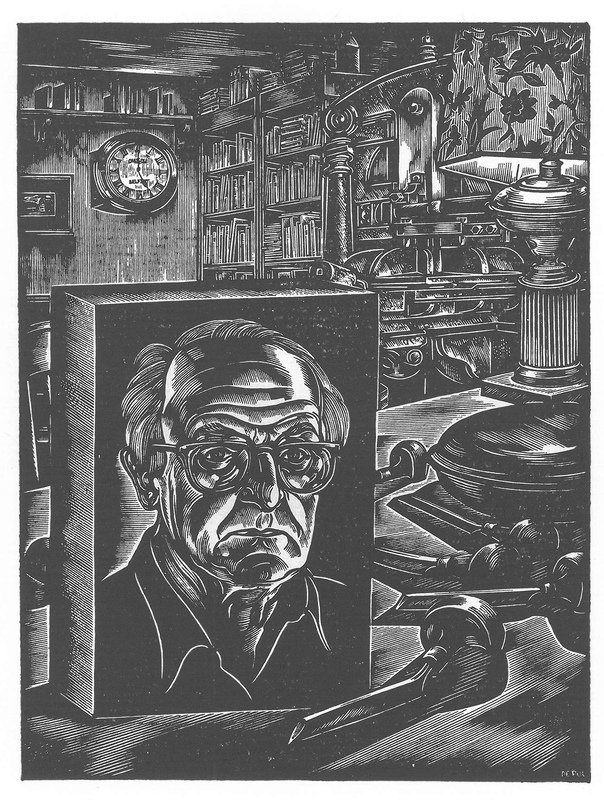About John DePol
John DePol (1913–2004) was one of America’s most prolific book illustrators who worked in the relief-printing technique known as wood engraving. His dramatic images often feature bold, dominant black backgrounds from which the image appears in white. This undated self-portrait is representative of DePol’s work in the latter years of his life.
DePol was born in New York on September 16, 1913, and when a teenager, he left school to help his family during the Depression. Until World War II, he held jobs primarily in the securities industry, taking night school classes. Even from an early age, DePol loved sketching everyday scenes in the neighborhoods in which he lived and worked. DePol’s first prints were etchings, begun in 1935 when he was 21 years old. These prints were not intended for illustrations but were created for his own pleasure and to hone his skills in fine printing. A few years later, he included lithography among the print mediums through which he expressed himself.
During the War, DePol was stationed in Ireland, England, France, and Germany, where he managed to continue sketching and printmaking. After the War in 1947, DePol turned to wood engraving as his primary printing medium, which continued until his death, a creative period of almost 60 years.
For most of his post-War life, DePol lived in a modest split-level home in Park Ridge, New Jersey, where he had a studio crammed with printing presses and his work bench. The walls were lined with book shelves and boxes of prints, blocks, and publications that featured his work overflowed into the hallway connecting the main part of the home and the garage.
The curator first met John and his charming wife Thelma (now deceased) in 1998 to discuss my thesis for an MFA in the Book Arts degree in Book Arts from the University of Alabama. From that visit on, a deep affection between the three of us developed, that 15 years later has resulted in these DePol exhibits. Every visit I made to John’s home and later in his high-rise apartment building in Clifton, New Jersey, resulted his presenting me with gifts of prints and books illustrated with his work. A few years after he died, his daughter Patricia and her husband Bob Forrest began sending me more printed material and ultimately over 300 of his wood engraved blocks, all of which I cherished. Beginning in 2012, I have been gifting these wonderful artifacts to Special Collections.

Book Illustrations and Pattern Papers

